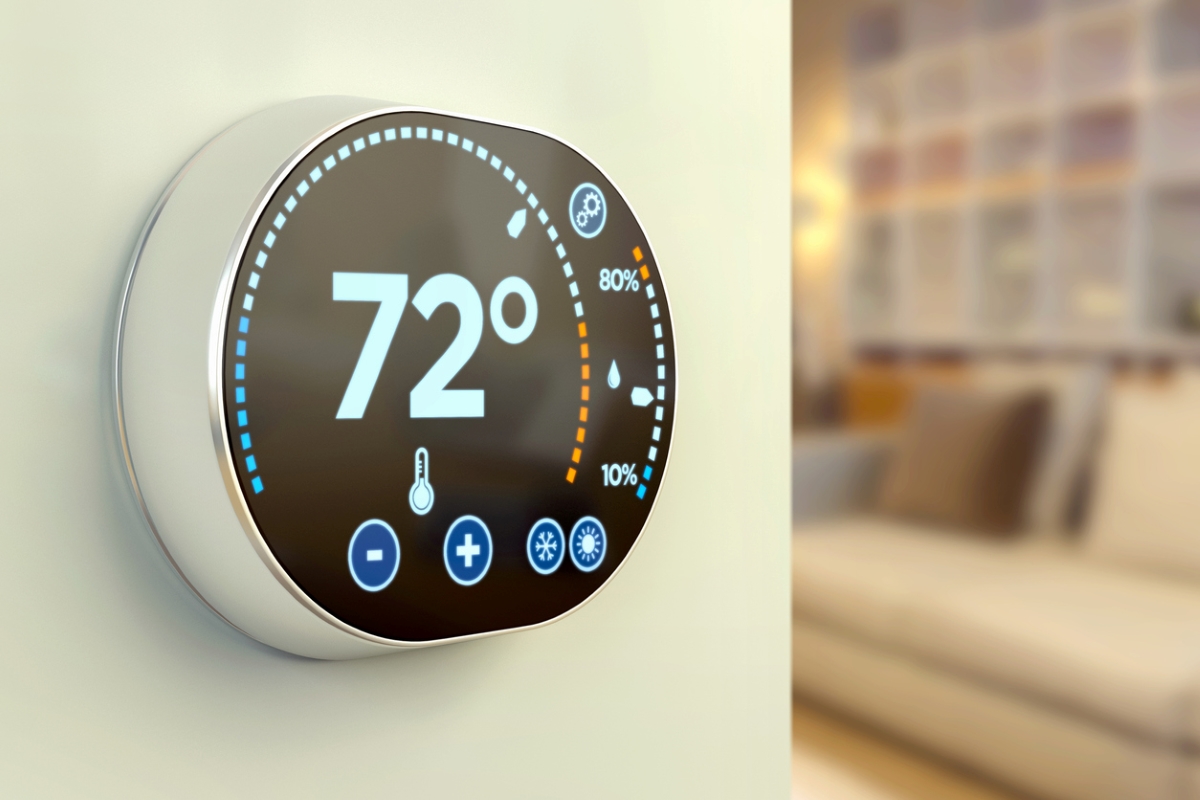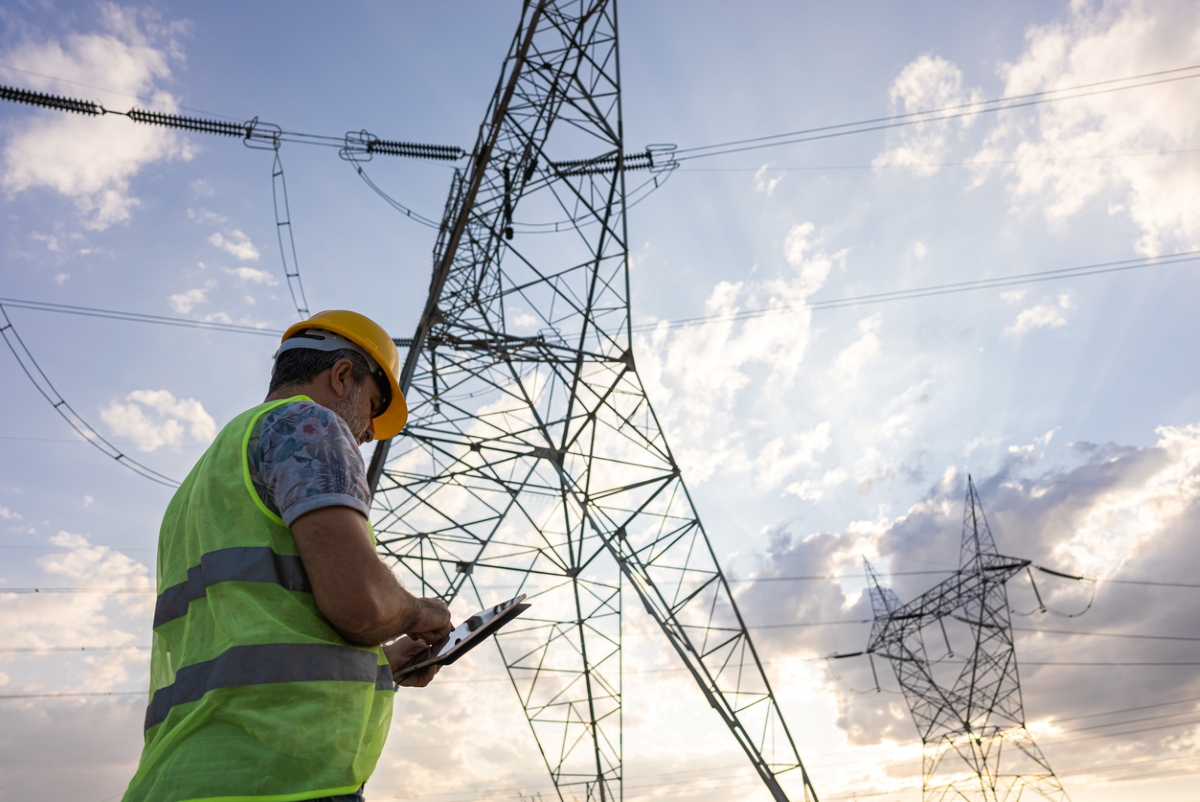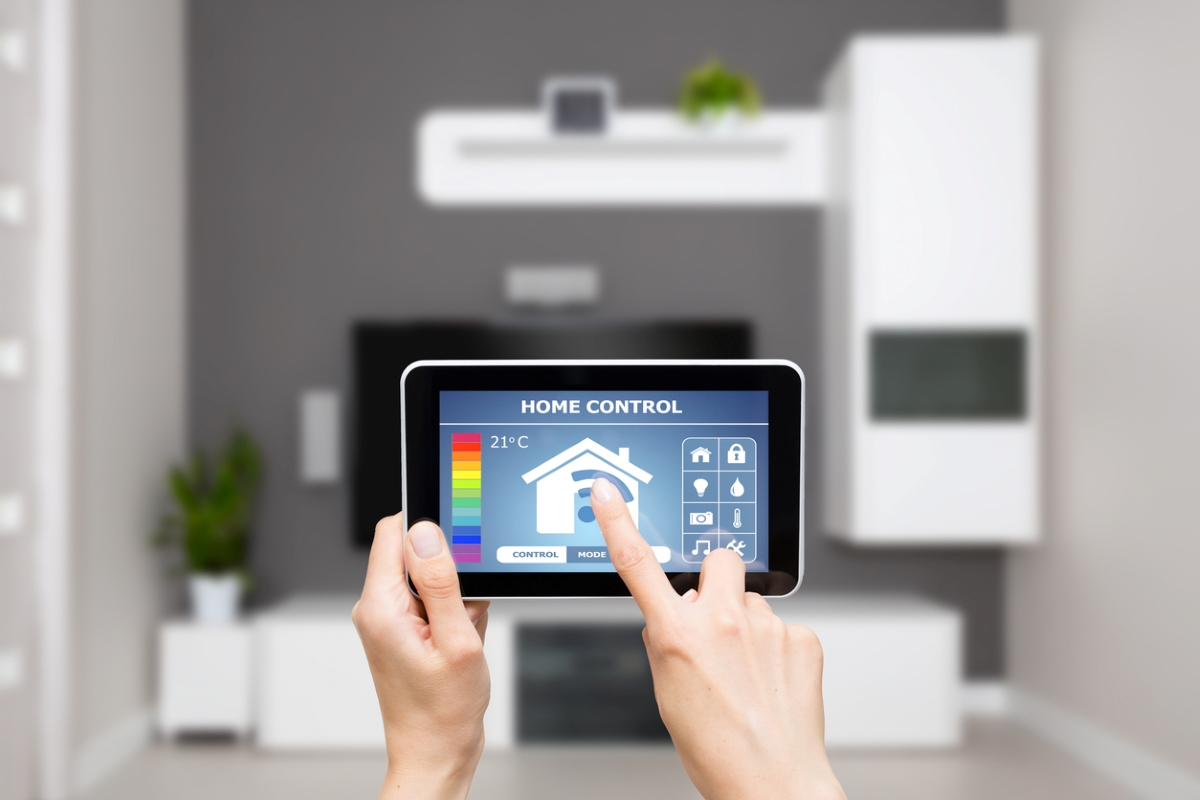

We may earn revenue from the products available on this page and participate in affiliate programs. Learn More ›
When temperatures fluctuate, it’s easy to flip on your home’s heating and cooling system and not think much about it. But as we experience more extreme weather in the United States, and as more people turn up their thermostats during the cold spells and down during the warm spells, it’s putting a strain on the nation’s power grid. When too many people overload the grid, power outages and brown outs can occur.
One solution to the problem may come as a bit of a surprise: Power companies can adjust your smart thermostat remotely. It turns out that the practice is quite common, and we may start seeing more of it in the years to come.
Why is there a problem with the power grid?
While it’s considered an engineering marvel, our nation’s power grid is in need of a serious update. The grid, which is a network of substations, transformers, and transmission lines that carry the electricity from the power plant to your home was built back in the late 1890s. As technology improved, it was updated with patches to stretch its capacity. But as our country moves forward and as more people use electricity, a new smart grid is being built to increase growing power needs.
The American Recovery and Reinvestment Act of 2009 provided the U.S. Department of Energy with $4.5 billion to modernize the electric grid. The largest initiative of the act is building the smart grid, which includes technology, tools, techniques, and energy storage to improve power grid performance across the country.
RELATED: What Temperature Should I Set My Thermostat in Winter?
What is the smart grid?

In simple terms, the smart grid allows for two-way communication so customers and utility companies can communicate with one another digitally. The smart grid uses a mix of controls, computers, automation, new technologies, and equipment that all work together with the electrical grid to determine a need and respond appropriately.
Think of it this way: During a heat wave, as temperatures soar and as air conditioners kick on, the smart grid will sense the increase in demand for power and make adjustments as needed to prevent outages.
Benefits of the smart grid, according to smartgrid.gov, include:
- More efficient transmission of electricity.
- Quicker restoration of electricity after power disturbances.
- Reduced operations and management costs for utilities, and ultimately lower power costs for consumers.
- Reduced peak demand, which can also help lower electricity rates.
- Increased integration of large-scale renewable energy systems.
- Better integration of customer-owner power generation systems, including renewable energy systems.
- Improved security.
So what does the smart grid mean for you and your thermostat?
During the summer of 2021, many homeowners in Texas complained that their thermostats had been turned up remotely, leaving their homes much warmer than what they felt was comfortable. One family told Houston affiliate KHOU that they received an alert on their phone after the thermostat was turned up and the move was part of an “energy saving event.”
The family said their home’s smart thermostat was installed a few years ago and they enrolled in a program called “Smart Savers Texas.” Under the agreement, electric customers allow the operating company, EnergyHub, to control their thermostats during high demand times.
Residents in the Dallas area made similar complaints in July 2022 when a program run by TXU Energy changed customers’ thermostats remotely as part of their “Demand Response Program.” The program allows the energy company to change the thermostats “by a few degrees for a short time, normally less than an hour, when the power grid is stressed,” according to the Fort Worth Star-Telegram.
While the smart grid may allow power companies to control your thermostat at peak times, it may also help you see in real time how much you’re spending on energy. Smart meters show how much electricity is being used and the current cost of electricity, which will help homeowners determine how to set the thermostat during peak times when electricity is most expensive.
RELATED: The One Drawback of Smart Thermostats Even Utility Companies Didn’t See Coming
What else can you do?

It will be years before all of the technology included in the smart grid is in place and perfected, so it may be some time before you notice any changes happening remotely to your home thermostat.
To check to see if you’re currently enrolled in a power saving program, there are a couple things you can do. First, contact your provider. Utility companies offer saving programs that vary by name. Some utility companies offer incentives to sign up for their program.
Also, if you have a smart thermostat, check the app you use to control it. The thermostat brand may have its own type of power saving program.
